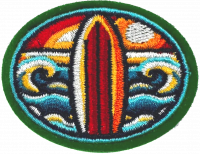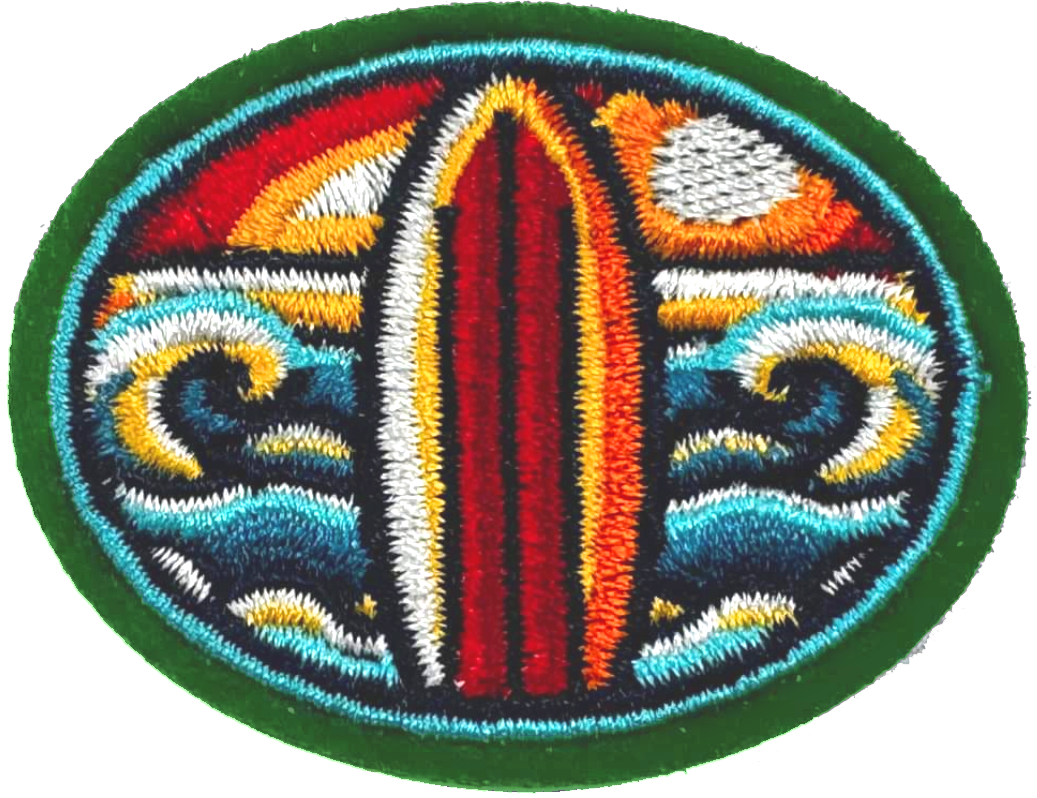AY Honor Surfing Answer Key
1
- Surfing is a surface water sport in which an individual, a surfer, uses a board to ride on the forward section, or face, of a moving wave of water, which usually carries the surfer towards the shore.
- Surfing involves riding ocean waves with a surfboard. To catch a wave the surfer swims a ways out into the ocean lying on their stomach on the surfboard. When a wave comes, the surfer aims the board into land and begins to paddle to “catch” the wave.
2
- Fins
- Wax
- Leash/leg rope
- Wetsuit
- Traction Pads
- Sunscreen
3
Tidal range is the difference between the maximum and minimum water levels during a typical tidal cycle. This will determine how much area is above water at low tide and underwater at high tide—the ‘intertidal zone’. The tidal range influences the shape of beaches, as well as the marine life and marine activities occurring in an area.
Boaters, fishers, and sightseers should carefully consider the tidal range in their plans. Areas with a large tidal range look very different at high and low tide and the incoming tide can catch people unaware with deadly consequences. Tidal currents are typically stronger in areas of large tidal range or during periods of increased tidal range (spring tides).
4
This variation is due to the response of the ocean to astronomical tidal forces, and the shape and depth of ocean basins, bays, and estuaries, which can have a funnelling effect. The spread of tides around the oceans can be thought of as many waves interacting with each other as well as the topography of the sea floor, with waves undergoing reflection, refraction, rotation and changes of speed.
5
High tide refers to the regular rise of the ocean waters while low tide refers to the regular fall of the ocean waters.
6
High tide and low tide are both natural phenomena that occur as a result of the gravitational pull of the moon, which creates the tidal force. The tidal force causes the Earth and its waters to distend on the side in closest proximity to the moon.
7
- Spilling waves are ideal for beginner board riders as they break consistently. Start off in the shallow white water before progressing to deeper water and unbroken waves.
- Dumping waves or heavy shore break should be avoided. These waves break quickly with a lot of force making them dangerous for beginners.
8
A rip is a strong, localized, and narrow current of water that moves directly away from the shore by cutting through the lines of breaking waves, like a river flowing out to sea. The force of the current in a rip is strongest and fastest next to the surface of the water.
9
Rips are complex, can quickly change shape and location, and are sometimes difficult to see.
Things to identify and look for are:
- Deeper and/or darker water
- Fewer breaking waves
- Sandy coloured water extending beyond the surf zone
- Debris or seaweed
- Significant water movement
10
- Stay calm – don’t panic
- If you can stand, wade don’t swim
- Keep hold of your board or inflatable to help you float
- Raise your hand and shout for help
- Never try to swim directly against the rip or you’ll get exhausted
- Swim parallel to the beach until free of the rip, then make for shore
- If you see anyone else in trouble, alert the lifeguards
11
- Always swim on a patrolled beach between the chequered flags
- Surf with a friend
- Tell someone where you are going
- Check the weather and tides
- Know your limits
- Be aware of rip currents
- Always wear a leash
- Wear the right wet suit
- Understand surf etiquette and rights of way
12
To maximise your enjoyment and keep yourself and others safe when riding waves, it is important to understand surf etiquette.
Here are a few basic tips that apply to all board riders catching waves. If you are unsure, ask a lifeguard to explain.
- Priority goes to the person closest to the peak
- Do not snake
- Priority goes to the person furthest out
- Paddle wide, not through the peak
- Do not drop in
- If you are caught inside a wave, stay in the white water
- Do not throw your board
- Do not dive head first
- Priority goes to the person ‘first to feet’ or ‘on the wave’
- To communicate call ‘left’ or ‘right’
13
14
15
16
References
- Australian Union Surfing Honor
- Surfing Guidelines
- Peak bodies and expert advice



